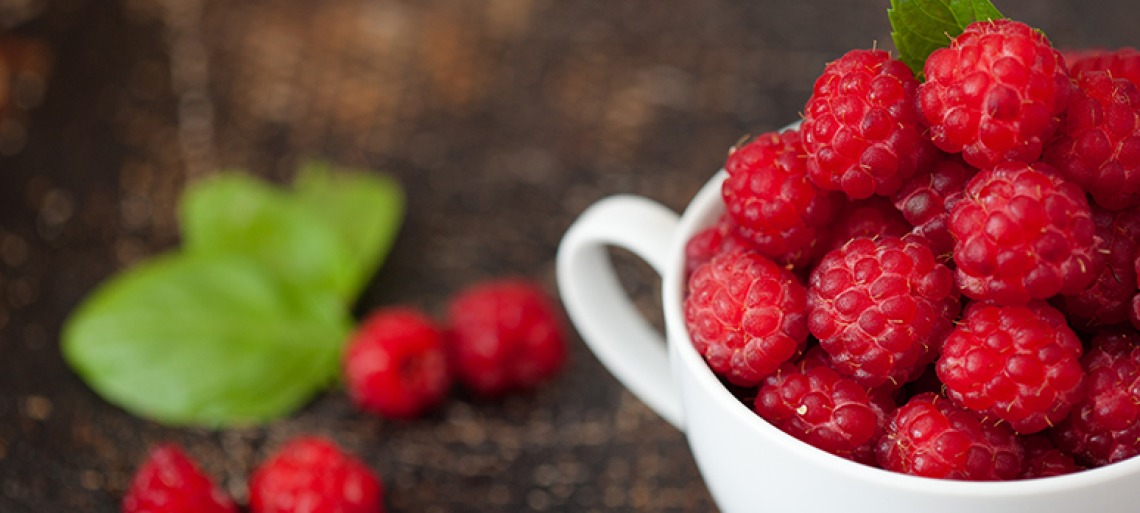Staying cool with seasonal fruits and vegetables


Cindy Davis
August in Tucson is hot, really hot. So how do we keep our cool?
Try eating seasonal produce, since lowering your energy intake can help keep your body temperature cooler. Produce is lower in calories than many other foods, with vegetables averaging 25 calories per serving and fruit around 60 calories per serving.
Reaching for those freshly harvested greens can keep more cash in your wallet, too, as produce typically costs less in season than it does at off-peak times. A few of the fruits and veggies you can expect to find on sale this month include apples, cucumbers, eggplant, figs, grapes, green beans, pears, plums, raspberries, sweet peppers, summer and winter squash, tomatoes, watermelon and zucchini.
A little effort, with a big nutritional payoff
Consider this simple, nutritional recipe that uses only three ingredients, with seasonal fruit as the centerpiece.
Grab a handful of fresh berries and place them in a bowl. Then, use a vegetable peeler to shave in dark chocolate, around 70-90% cacao (I like 80% cacao for this yummy treat). Next, pour a small amount of heavy whipping cream into a cup, and whip it up with a handheld mixer. Add a dollop to your bowl of berries and chocolate and enjoy.
Given this recipe's simplicity, and deliciousness, you might be surprised by the nutritional value imparted by each of these three ingredients.
Raspberries are nutrient dense, with vitamins C and E, beta carotene, lutein, lycopene, selenium, zeaxanthin and anthocyanins. Anthocyanins, which give berries, grapes, red onions and tomatoes their rich coloring, have anti-inflammatory properties that help reduce cardiovascular disease and other chronic diseases. These antioxidants also help prevent certain cancers. Fiber in raspberries is high, at 8 grams per 1-cup serving, and helps reduce diabetes, heart disease and obesity.
A 1/2 teaspoon of dark chocolate only adds 75 calories and holds many nutrients as well, such as magnesium, anti-inflammatory flavonoids, antioxidant polyphenols and theobromine. Theobromine, in conjunction with polyphenols, may increase levels of high-density lipoproteins (or "good" cholesterol) and decrease low-density lipoprotein (or "bad" cholesterol).
And the whipping cream? It's delicious without all the added sugar of a commercial whipped topping. Heavy cream also contains choline, which supports memory and cognition, and calcium and phosphorus for bone health.
A head start on produce-centered meals
Lower prices on produce offer an opportunity to get creative in the kitchen – having fun with your food is encouraged! – but here are a few options to help less adventurous cooks get started.
- Easy One-Pan Eggplant Dinner. Great for busy evenings. This recipe creates three portions, so consider doubling it to feed a bigger family. Each serving provides about 309 calories, with a nice serving of protein.
- Roasterd Mini Sweet Peppers. Skip a few steps when short on time: Simply wash the peppers and place them on nonstick cookie sheet. Broil for 17 minutes, and you have a great side dish.
- Best Healthy Apple Crisp Ever. Apples are always a good bet. Serve as dessert or make in advance for a quick breakfast. One serving has 204 calories with 4.2 grams of fiber.
Now, get in the kitchen and play with those fruits and vegetables.
Cindy Davis is the registered dietitian nutritionist at Life & Work Connections, where she offers free personalized nutrition and health coaching to University employees. A two-time University of Arizona alumna, she holds a bachelor's degree in nutrition and dietetics and a master's degree in public health with a focus on health behavior and health promotion.
To stay up to date with opportunities to improve wellness, please subscribe to the Life & Work Connections email list.
A version of this article originally appeared on the Life & Work Connections website.

